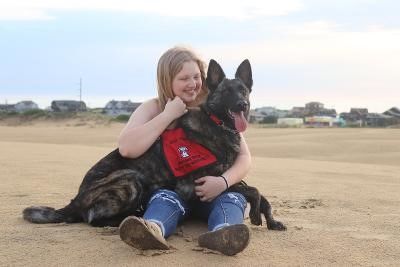

CONCLUSIONS AND CLINICAL IMPORTANCE: The presence of cataplexy episodes should prompt a thorough diagnostic work‐up to exclude the presence of intracranial (and extracranial) pathology. An initial remission of signs was observed in all dogs, but a subsequent relapse of clinical signs was recorded for 4 dogs, of which 3 responded to adjustment or resumption of treatment. Prednisolone was used in the management of all dogs, 6 dogs received imipramine, and 2 received cytosine arabinoside. Meningoencephalitis of unknown origin was diagnosed in 2 dogs, extracranial foci of inflammation were identified in 2 dogs (aspiration pneumonia, esophagitis, otitis media), and no abnormalities were found on diagnostic investigations in 4 dogs. RESULTS: Seven French Bulldogs and 1 Chihuahua (age range, 9‐66 months) were included. Dogs were included if episodes consistent with cataplexy were present during examination by a board‐certified veterinary neurologist and diagnostic work‐up included magnetic resonance imaging of the brain and analysis of cerebrospinal fluid. METHODS: A call for suspected cases of acquired narcolepsy was made online, followed by a retrospective review of detailed medical records of potential cases. ANIMALS: Eight dogs with clinical features consistent with acquired narcolepsy. OBJECTIVE: To describe the presentation, clinicopathological features, diagnostic imaging findings, and management of dogs with suspected‐acquired narcolepsy. 1448-1454 ISSN: 0891-6640 Subject: brain, cerebrospinal fluid, cytosine, esophageal diseases, inflammation, magnetism, meningoencephalitis, narcolepsy, pneumonia, prednisolone, relapse, remission, veterinary medicine Abstract: BACKGROUND: Acquired narcolepsy has rarely been reported in veterinary medicine.

Mandigers, Niklas Bergknut Source: Journal of veterinary internal medicine 2021 v.35 no.3 pp. Ives, Joe Fenn, Francesca Raimondi, Filipa Lourinho, Paul J. Me and PGE2-Me, to narcoleptic dogs and found that intra- venous administration of PGE2-Me induced a dose-dependent reduction of cataplexy in canine. Cell 98, 365–376.Suspected acquired narcolepsy in 8 dogs Author: Koen M. The Sleep Disorder Canine Narcolepsy Is Caused by a Mutation in the Hypocretin (Orexin) Receptor 2 Gene. Lin, L., Faraco, J., Li, R., Kadotani, H., Rogers, W., Lin, X., Qiu, X., de Jong, P.J., Nishino, S., and Mignot, E. Identification and Functional Analysis of Mutations in the Hypocretin (Orexin) Genes of Narcoleptic Canines. Hungs, M., Fan, J., Lin, L., Lin, X., Maki, R.A., and Mignot, E. Small-breed dogs seem to be more severely affected. Symptoms usually appear by the dog’s 6 months of age.

Predisposed breeds include the Labrador Retriever, Poodle, Dachshund and the Doberman Pinscher. Sudden loss of muscle tone triggered mainly by positive emotions that share some physiological similarities with REM sleep atonia, called cataplexy is the most valuable clinical feature used to diagnose narcolepsy. Narcolepsy has been diagnosed in many breeds and has an established hereditary component. Symptoms appear suddenly, and the recovery is spontanious as well. Dog narcolepsy Labrador type is a disabling sleep disorder characterized by daytime sleepiness, sleep fragmentation, striking transitions from wakefulness into rapid eye movement (REM) sleep, and symptoms of abnormal REM sleep, such as cataplexy, sleep paralysis, and hypnagogic hallucinations.


 0 kommentar(er)
0 kommentar(er)
